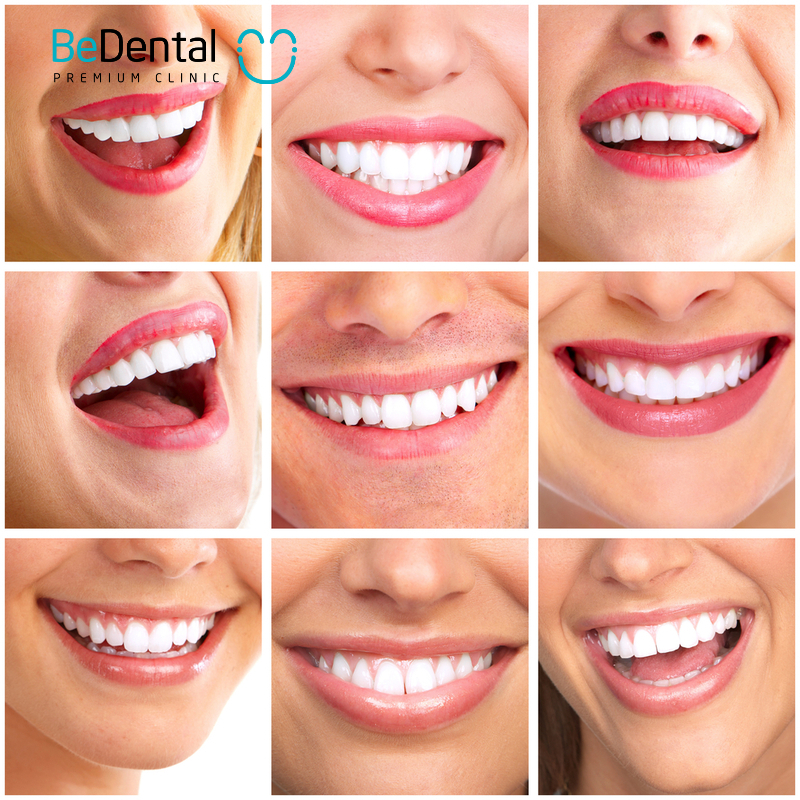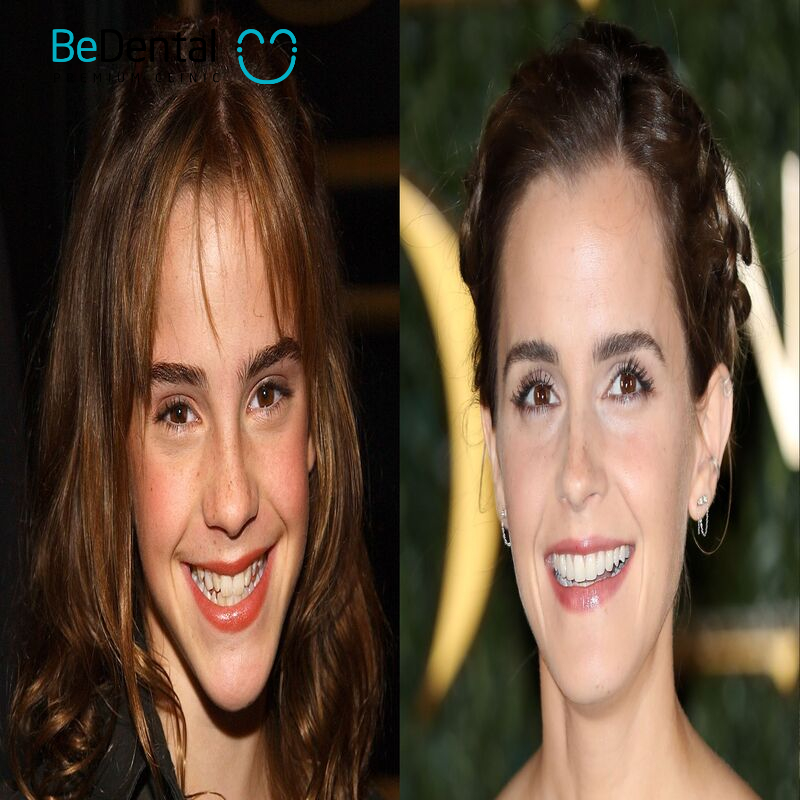Braces for children not only serve aesthetic purposes but also protect children from oral health issues. Early orthodontic treatment helps dentists adjust teeth and achieve an ideal bite alignment, while increasing treatment effectiveness. To answer the question ‘At what age can children get braces?’, let’s take a look at the article below!
Should children get braces?
Various factors lead to dental issues affecting children. These imperfections not only impact aesthetics and communication confidence but also pose risks to oral and overall health.
Crooked teeth or spaced teeth can trap food particles and plaque, making hygiene challenging. This increases the risk of dental problems such as cavities, gum inflammation, and bad breath.
See more: Why do gums swell when getting braces
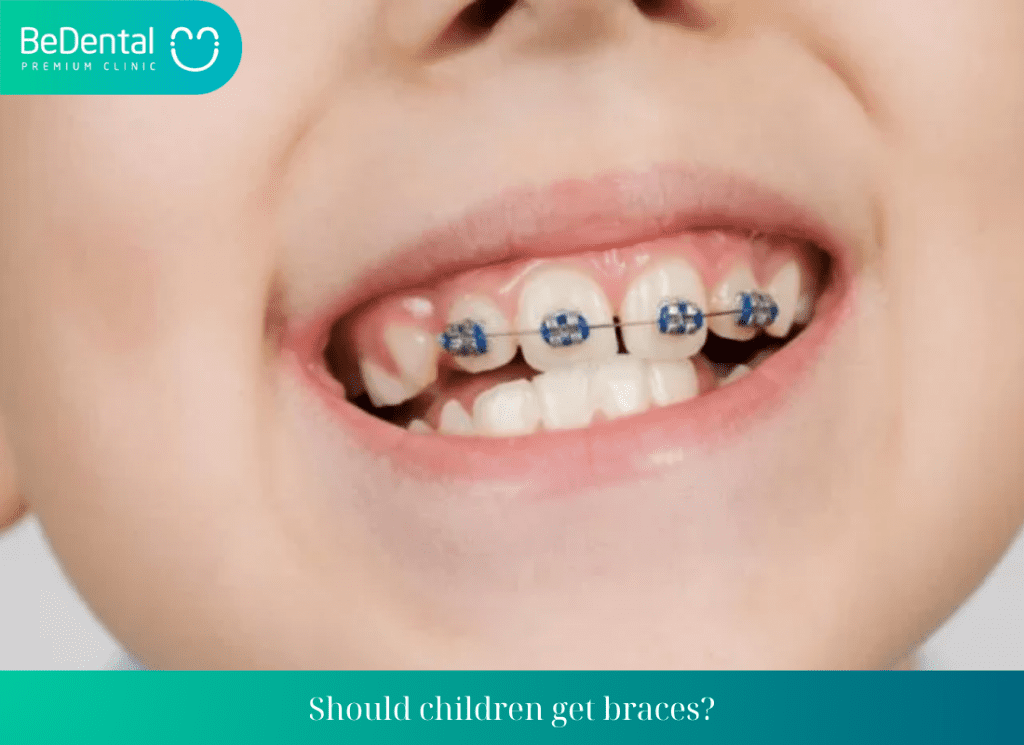
Usually, dentists will detect children’s dental issues and determine the appropriate time for braces. Early orthodontic treatment is recommended if prescribed by a doctor.
Typically, braces are often applied when children are 8 to 9 years old, when their teeth are not fully developed, and their jaws are still growing.
For children with misaligned bites, adjustments should be made before extracting the first baby tooth. If left too late, this condition can cause imbalances in jaw development.
See more: Bone resorption when wearing braces
Cases where braces are recommended for children
Braces are an effective method to address issues such as overbite, gaps, and misalignment. By using a special appliance system, braces help shape and move teeth gradually along the jawline until the desired position is achieved.
So, in what cases should parents consider braces for their children? According to doctors and experts, braces should be considered for children in the following cases:
- Children with crooked teeth, multiple tilted or rotated teeth, protruding teeth, teeth positioned inward or buried within the bone.
- Overbite, preventing children from closing their mouths or causing them to sleep with their mouths open.
- Underbite, where only the lower jaw is visible when the child smiles.
- Gaps between large teeth.
- Deep bite, where the upper jaw covers the lower jaw when the child smiles.
- Crossbite, when one or more teeth grow in the wrong position of the bite.
- Open bite, where the upper and lower jaws do not touch.
At what age can children get braces?
When should children get braces? At what age can children get braces?
See more: Will braces cause protrusion?
Braces for children aged 6-11 years old
This is the stage when children have both baby and permanent teeth, known as the mixed dentition stage. Parents should carefully monitor their child’s dental condition and take them to the dentist for regular check-ups. If any signs of misalignment are detected, the dentist will intervene and guide the proper tooth alignment.
Usually, the dentist will recommend the child to wear silicone braces, also known as a jaw trainer. This type of jaw trainer is made of plastic and can be worn daily and easily removed. The jaw trainer helps guide teeth alignment and jaw development correctly.
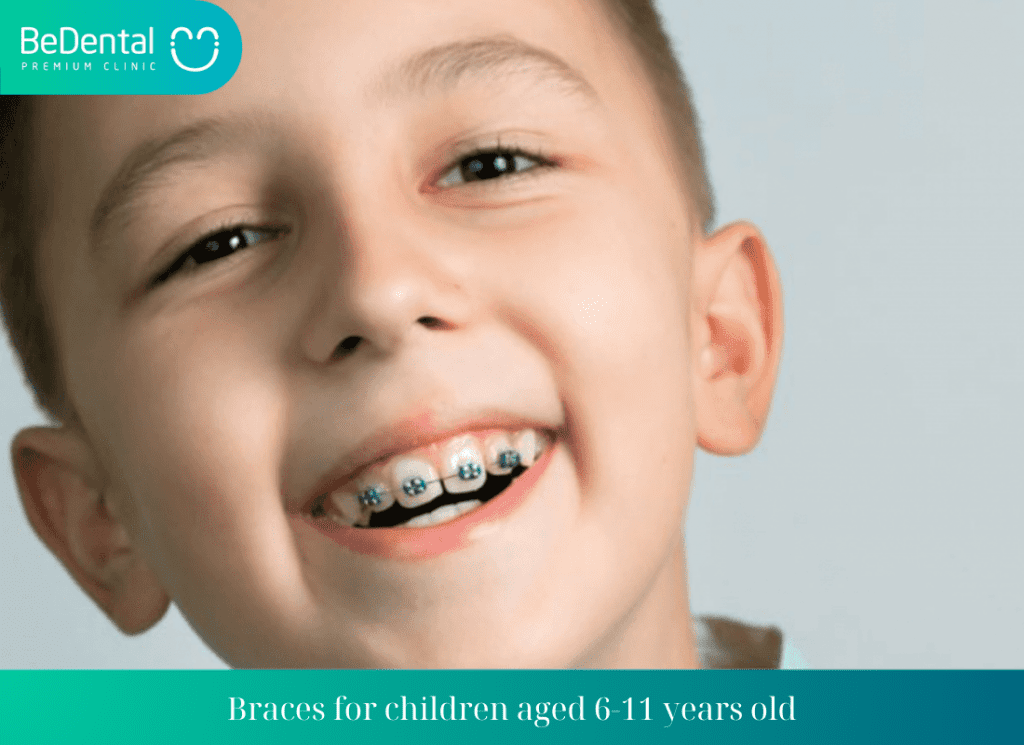
Braces for children aged 12-16
At this age, most children have completed the stage of replacing baby teeth with permanent teeth and are healthy enough to use orthodontic appliances.
Adjusting tooth misalignment during this stage will be much easier and does not require tooth extraction. Therefore, the effectiveness of the orthodontic correction process is very good, and the treatment time is also faster compared to adults.
Additionally, the process of wearing braces at this age is less painful because the child’s jawbone is still soft and teeth can easily move.
See more: Do braces change the jawbone
Braces from age 18
From 18 years old onwards, the jawbone has fully developed and become firm. During this stage, adjusting teeth will become more difficult and complex.
To perform this adjustment, various techniques such as tooth extraction, jaw widening, mini-screws installation may be needed, and it may take longer and cost more.
Orthodontic process for children
The orthodontist will attach brackets to the front surface of the teeth and connect them with wires. Then, the child will have their wires adjusted or changed every 4-6 weeks to gradually move the teeth into the correct position. In addition, the child may also need to wear other devices such as:
- Elastics: Used to connect the upper and lower teeth to increase pressure and accuracy in the adjustment process.
- Headgear: A black metal frame with straps wrapped around the head, designed to pull the back teeth backward and adjust the jaw position.
After the braces are removed, most children will need to wear a retainer – a removable custom-made brace.
The retainer helps keep the teeth in the correct position until the wisdom teeth are fully grown and jaw development stops, usually around 18 or 19 years old. Some adults may also need to continue wearing this retainer one day a week to maintain the teeth position.
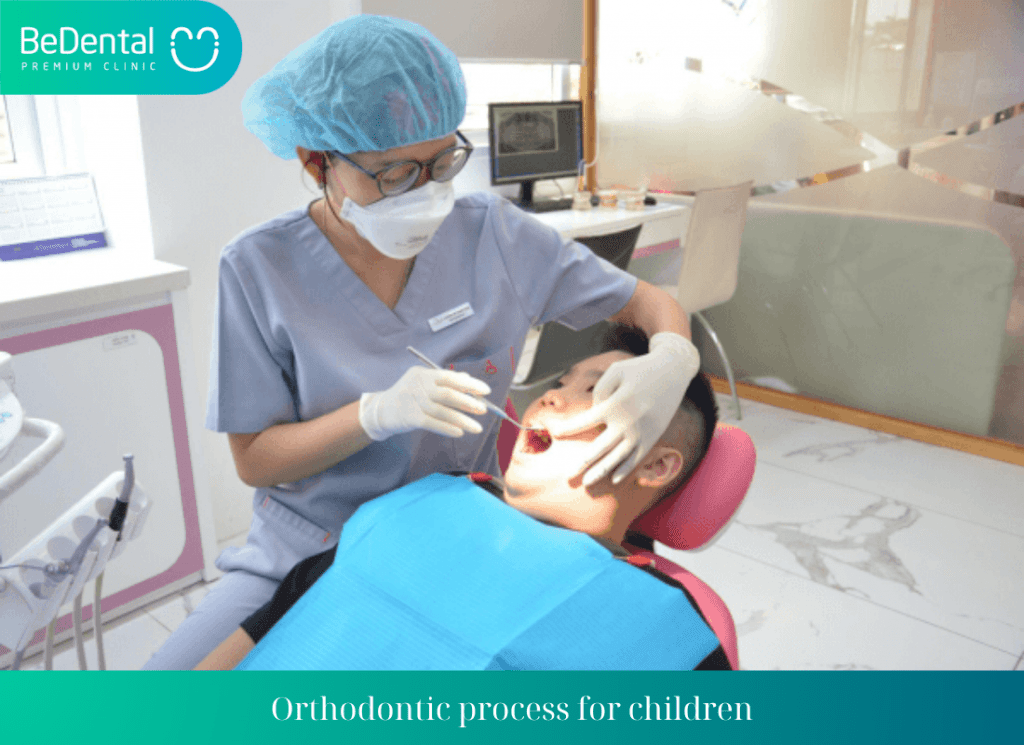
Do braces hurt?
Nowadays, the process of getting braces for children is much less painful than it used to be. In the past, brackets needed to be bonded to the front of the teeth to reduce pressure from the metal wires around each tooth.
However, modern technology has brought more flexibility, especially with the use of wires made of alloys like nickel-titanium, which help create gentler pressure.
See more: All about lower jaw braces
Despite technological advancements, getting braces can still cause discomfort. Most children may feel soreness for about 1-2 days after the braces are tightened.
To alleviate the pain, over-the-counter pain relievers like ibuprofen are commonly used to ease the discomfort. If the gums or cheeks are irritated due to rubbing against the brackets, the orthodontist may provide wax for lubrication and softening to heal the damaged tissues.
Time and cost of braces for children
When parents are preparing for their children to get braces, questions about time and cost are the two most common inquiries orthodontists receive. While the answer will vary depending on each patient’s case, typically children wear braces for a period of 1 to 3 years.
The treatment costs range from several million to around 100 million Vietnamese dong, depending on the duration, quality, and complexity of the treatment process.
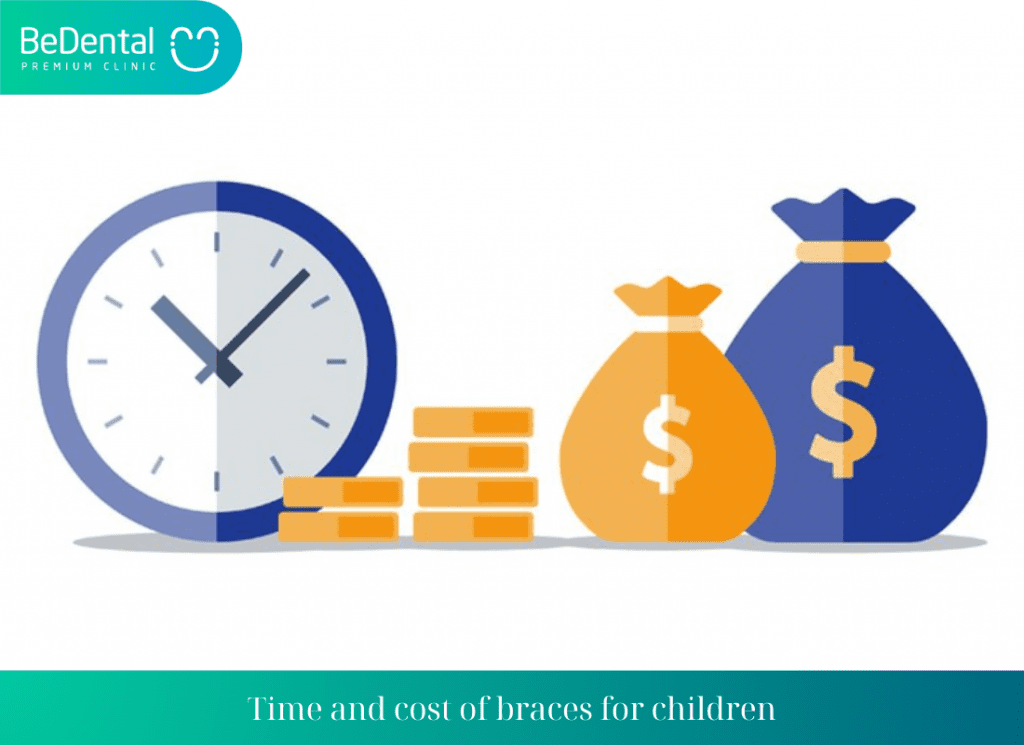
During the initial consultation, the orthodontist will thoroughly examine the child’s teeth and jaw by taking X-rays and bite impressions. Based on the results, the dentist will propose the best treatment plan and estimate the cost.
The specific duration of wearing braces for a child will depend on the child’s level of cooperation, such as their ability to wear orthodontic headgear or elastic bands when necessary.
Benefits of early orthodontic treatment for children
Here are the Benefits of early orthodontic treatment for children that parents should not overlook:
See more: Braces or Ceramic Veneers: Pros and Cons
Early orthodontic treatment for children provides better and faster results
At a young age, teeth and jawbones are still developing and flexible, making orthodontic treatment most effective. This means that orthodontic adjustments will be easier and yield better results.
Conversely, as children grow older, teeth become more misaligned, and jawbones become firmer, making the treatment process more difficult and complex. This requires more time and higher costs to achieve the desired results.
Early braces cause less pain and discomfort
As mentioned earlier, at a child’s age, the jawbone is still soft, and teeth can easily shift, making the orthodontic process less painful and uncomfortable. Furthermore, braces help limit tooth extraction issues and do not cause swelling or pain for the child.
Prevents the risk of oral health problems
Timely correction of children’s misaligned teeth reduces the risk of dental health issues. When a child has straight and evenly spaced teeth, they are less likely to have problems with food accumulation and plaque buildup. Additionally, dental hygiene becomes easier.
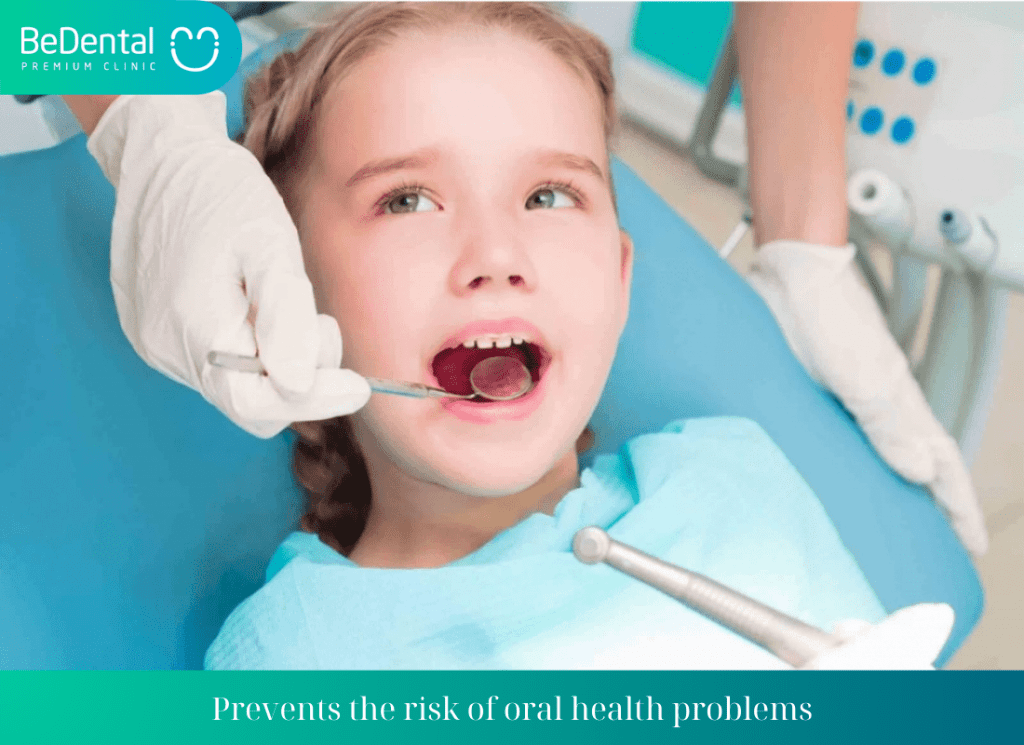
Ensuring Aesthetic and Pronunciation
When the teeth are straight and properly aligned, they will create a balanced and harmonious face for the child. This not only enhances beauty but also ensures that the child can pronounce words correctly, without speech impediments, thereby increasing confidence in daily communication.
It is hoped that the information in this article has helped parents answer the question of how old a child can get braces. At the same time, it raises awareness of the importance of early orthodontic treatment when detecting dental misalignments, in order to avoid negative impacts on the child’s health.
See more: What Is the Appropriate Age for Braces?
Conclusion
In conclusion, orthodontic treatment, including braces for children, has evolved to become more comfortable and effective in today’s modern age.
The initial consultation, treatment duration, and benefits of early intervention all play crucial roles in ensuring optimal oral health and a confident smile for children.
By addressing aesthetic concerns, pronunciation issues, and overall dental alignment, braces can significantly improve a child’s quality of life and self-esteem.
Parents are encouraged to consider the benefits of early orthodontic treatment and collaborate with orthodontic professionals to provide the best care for their children’s dental health.
Tư vấn chuyên môn bài viết:
BÁC SĨ DƯƠNG THỊ THÙY NGA




